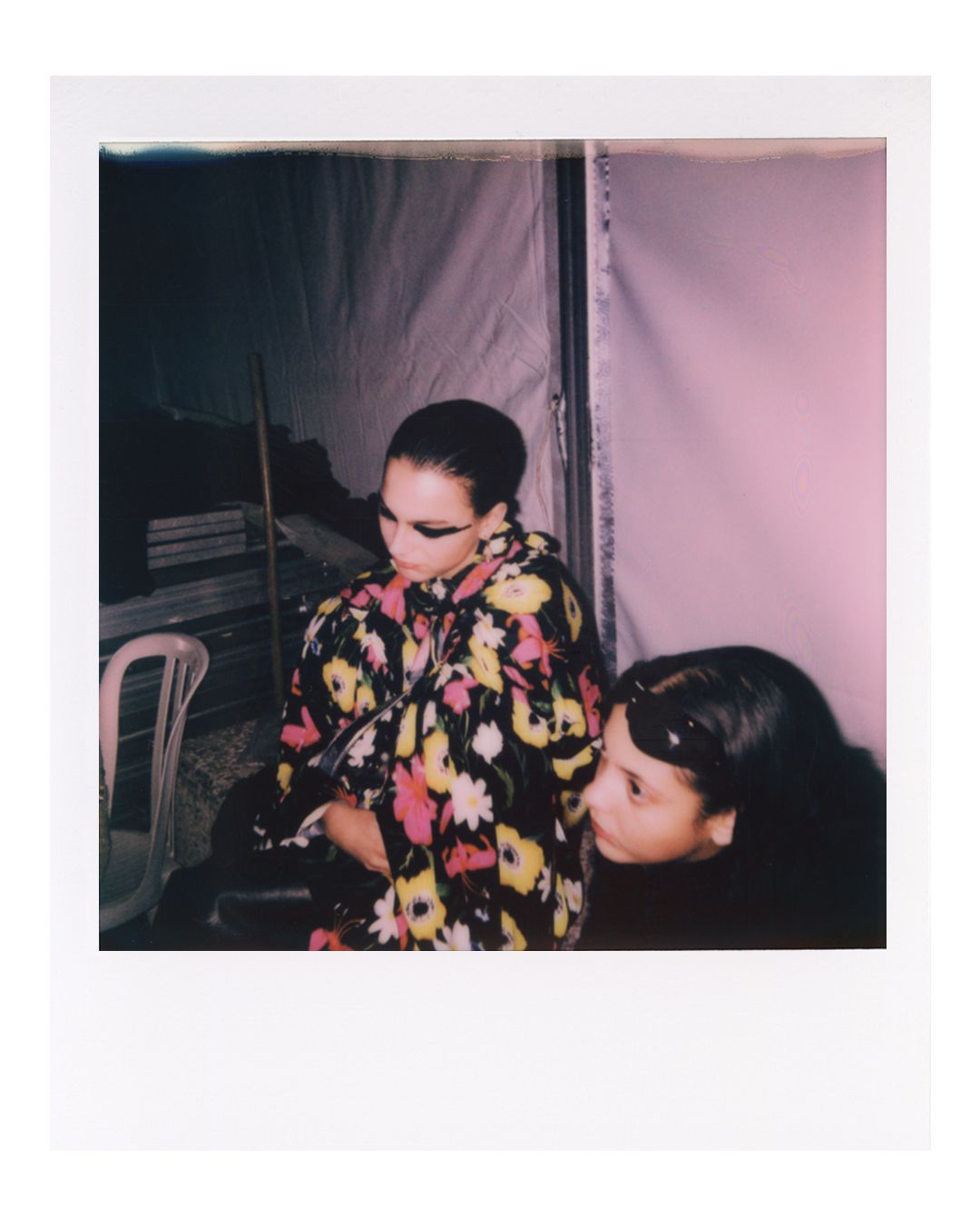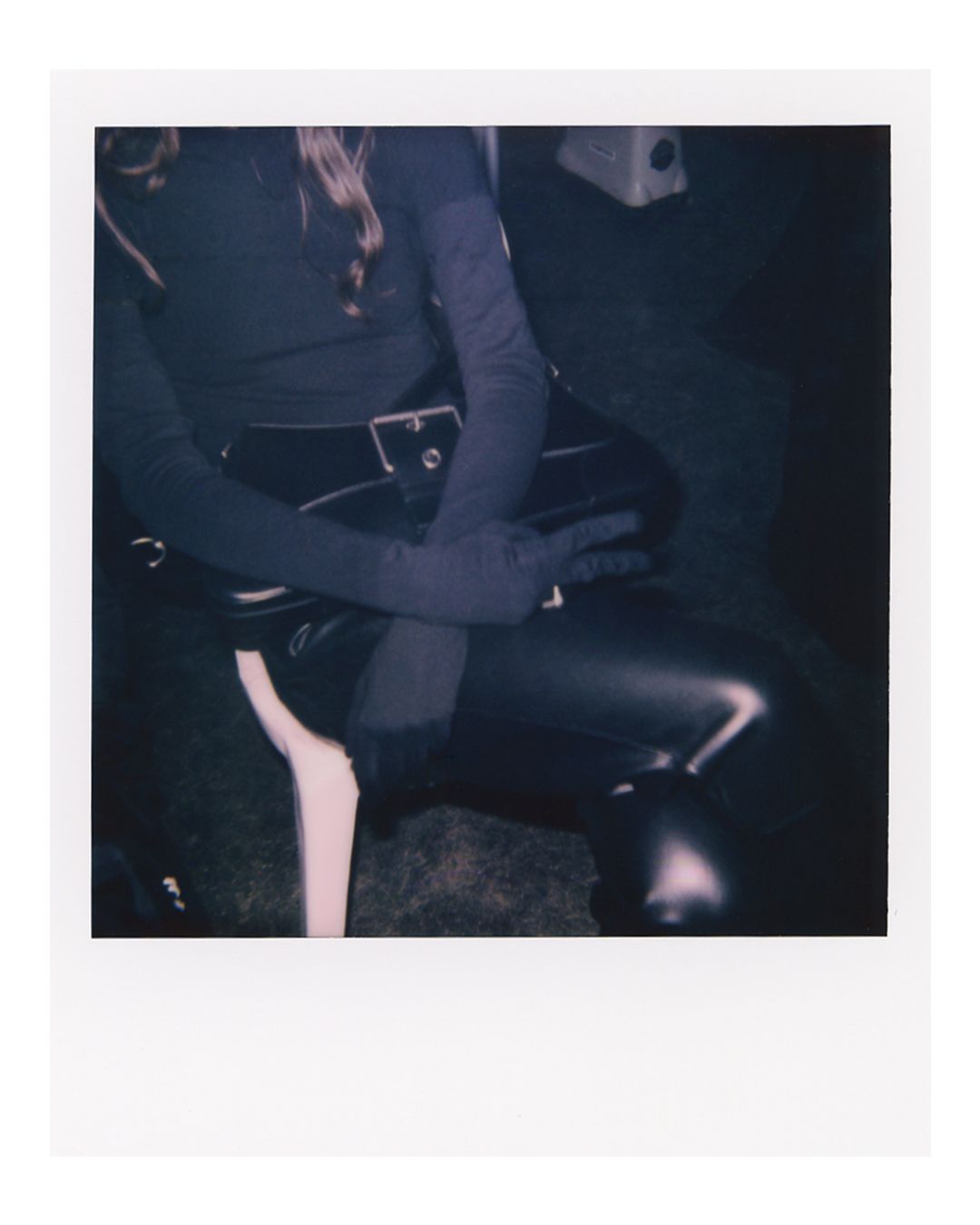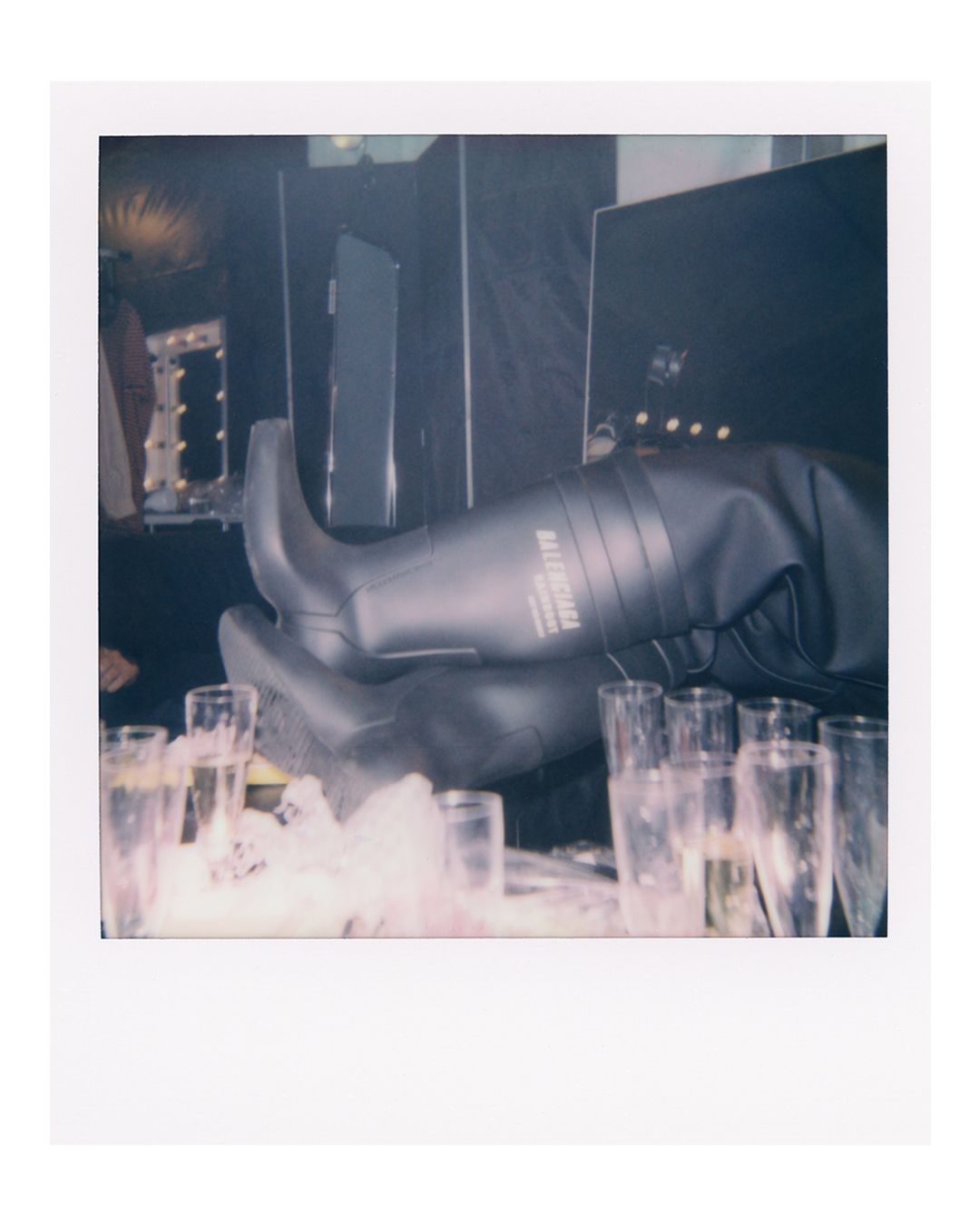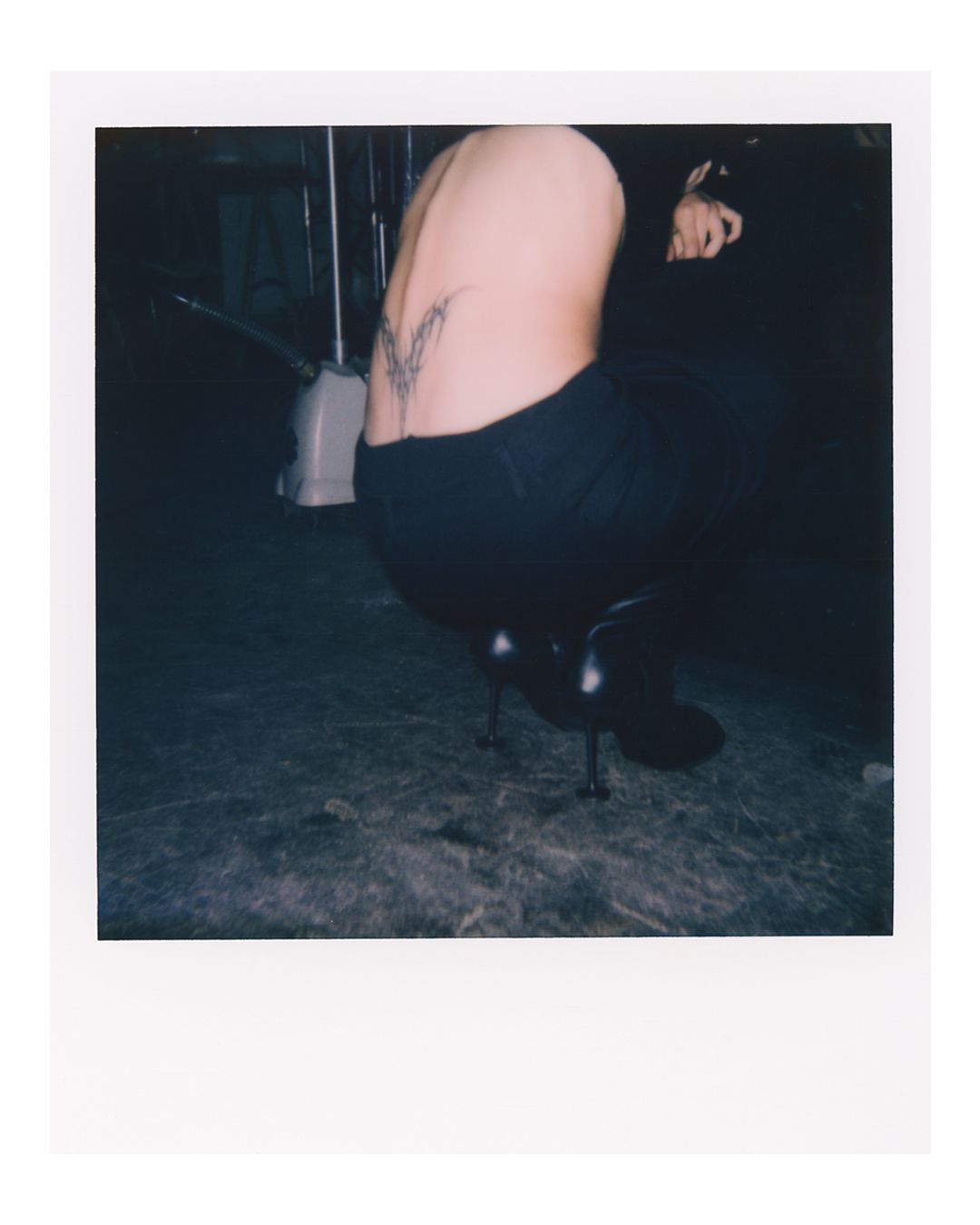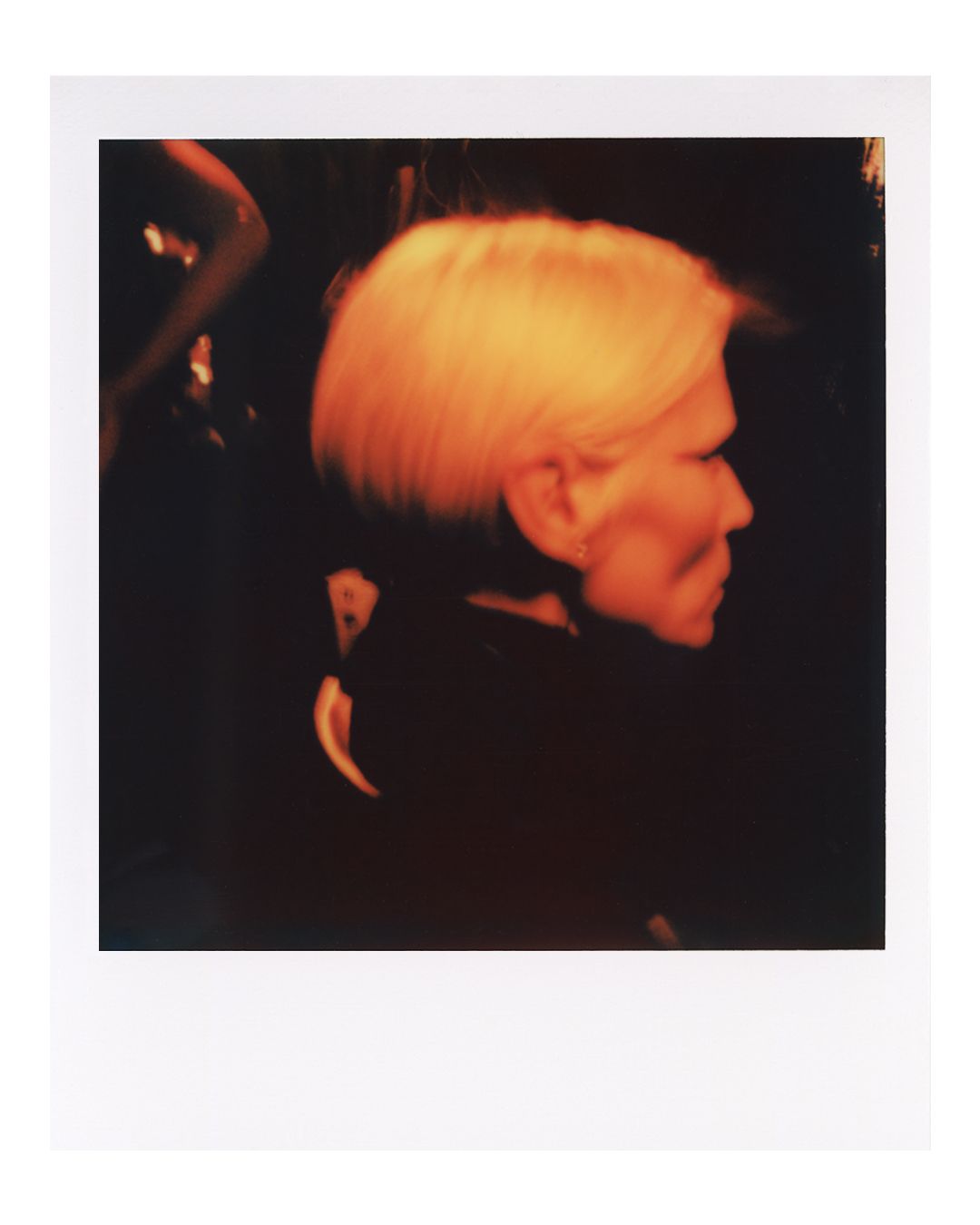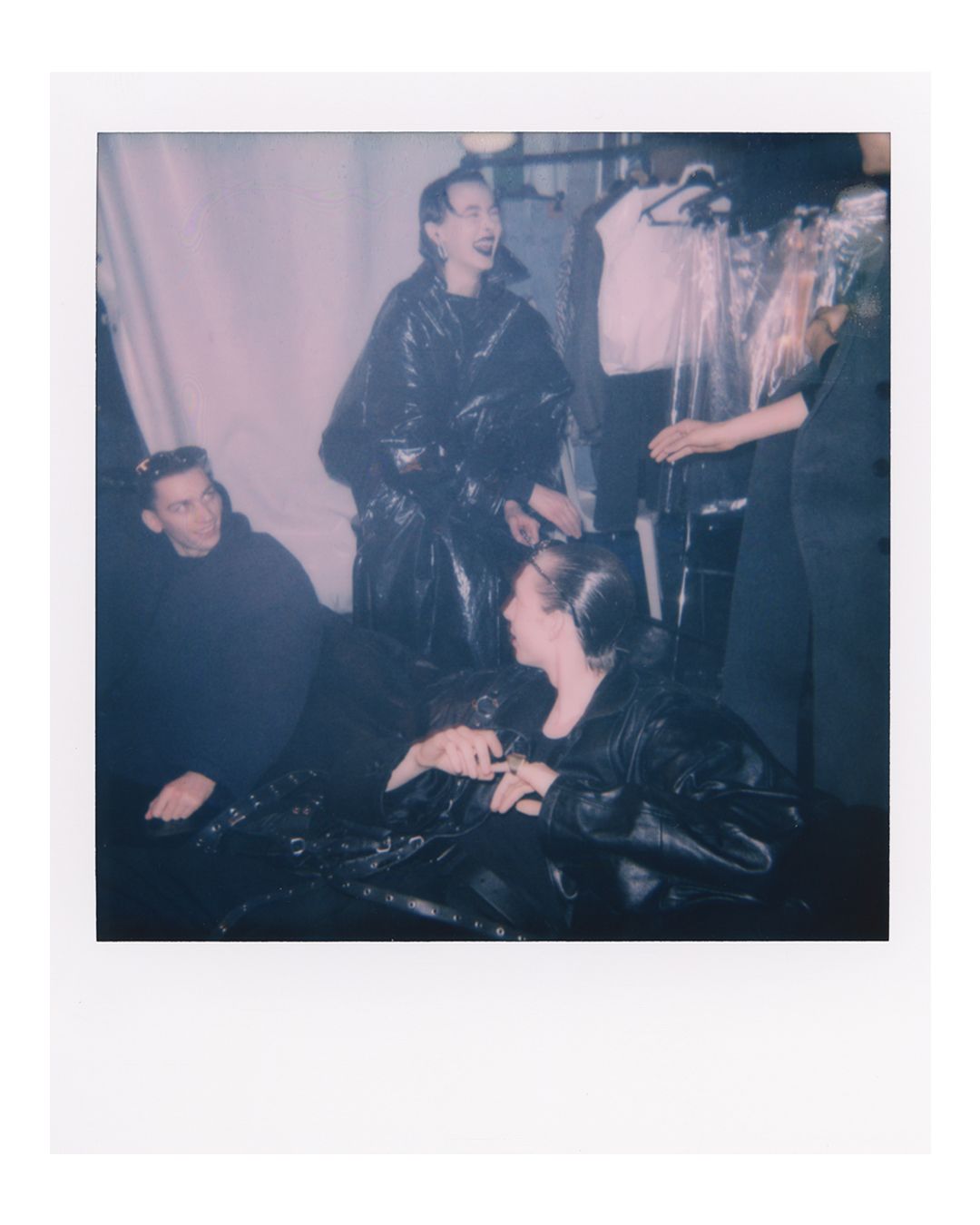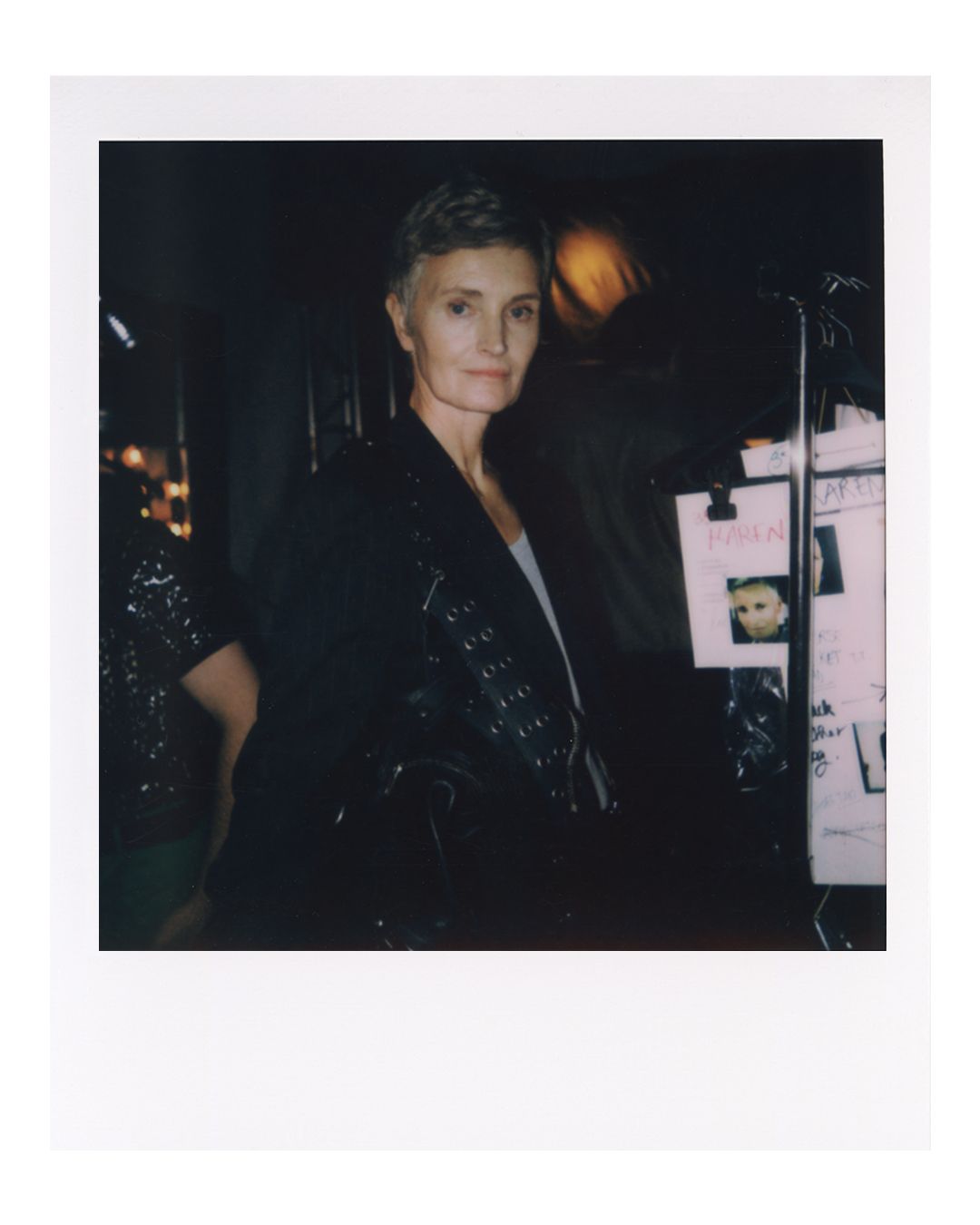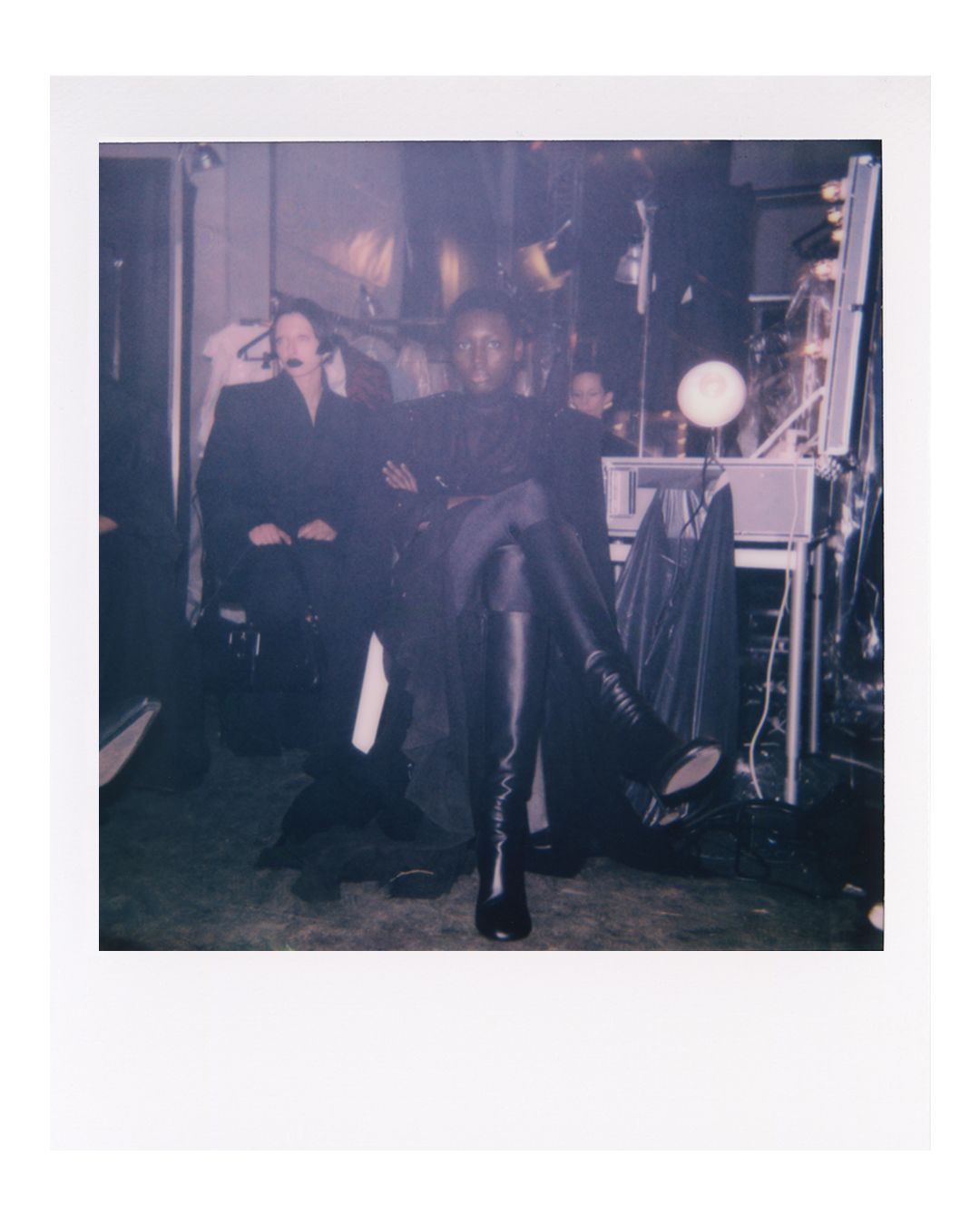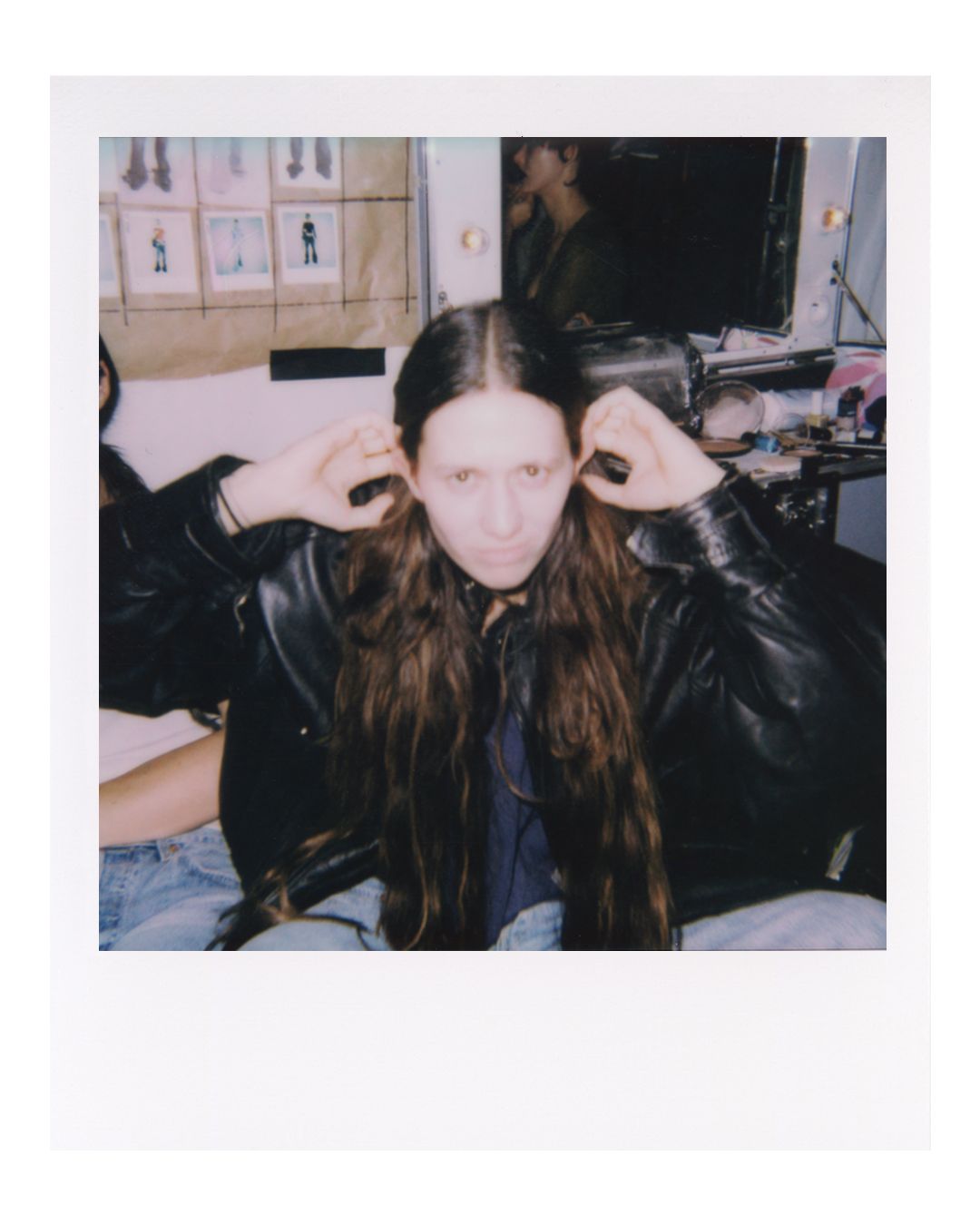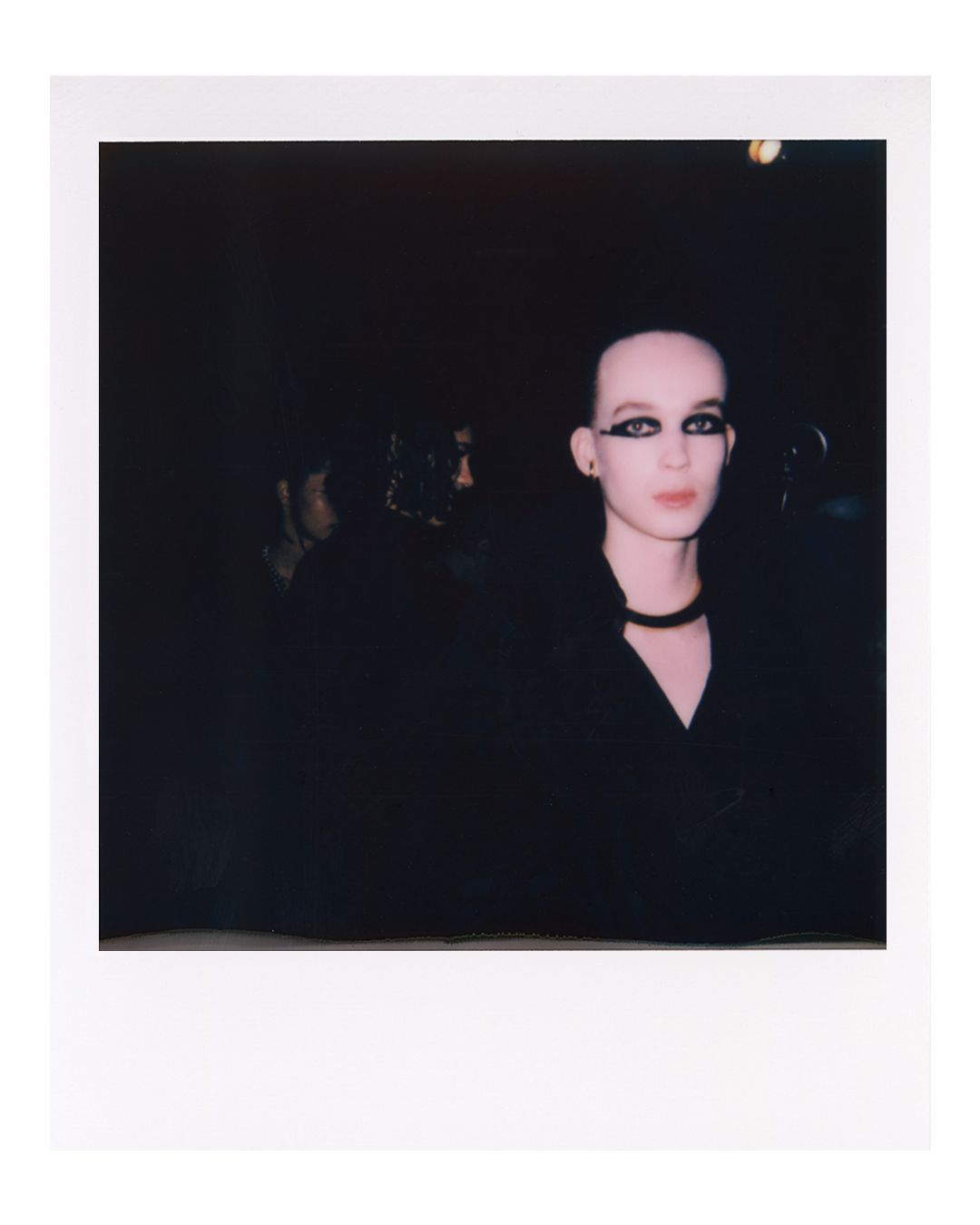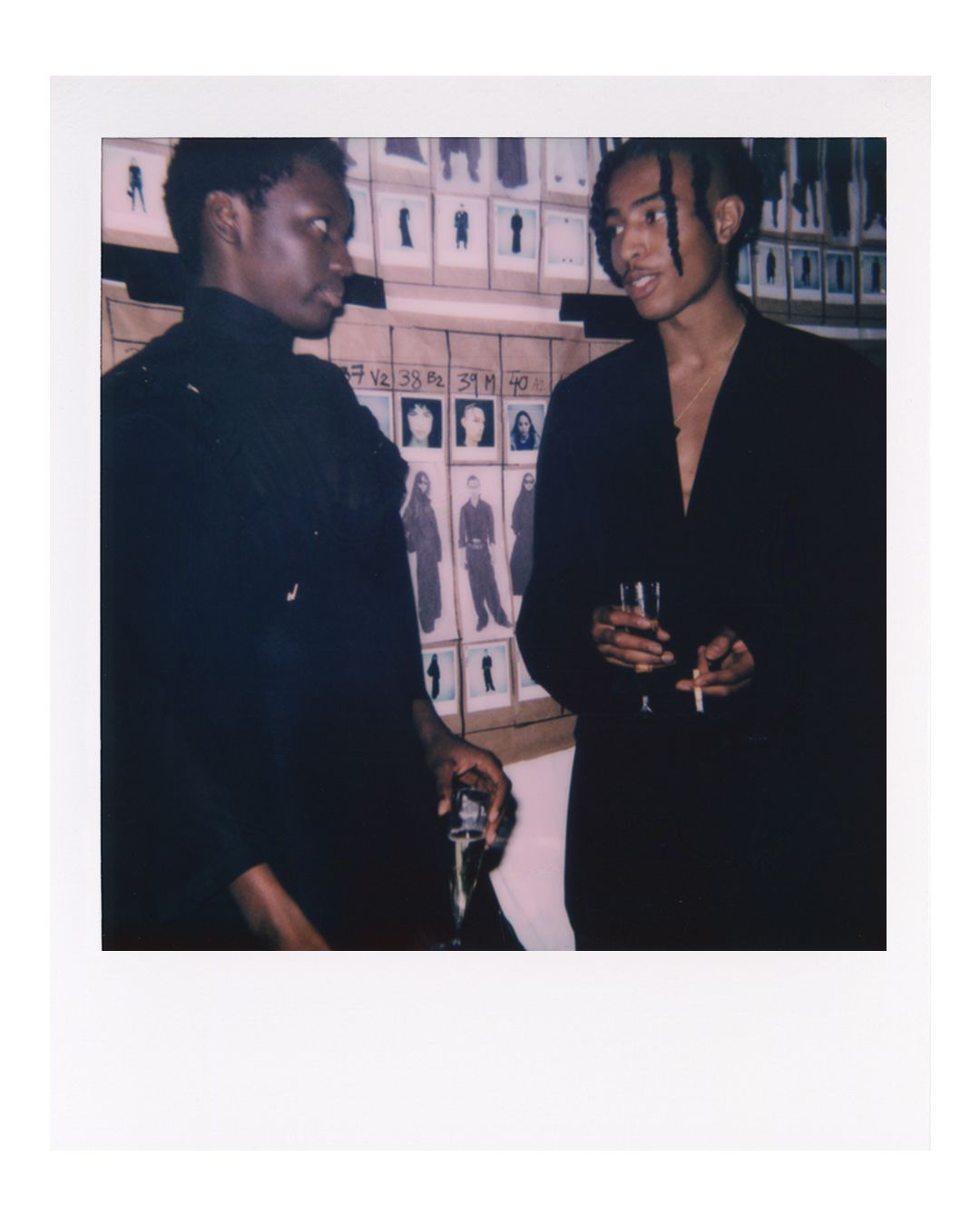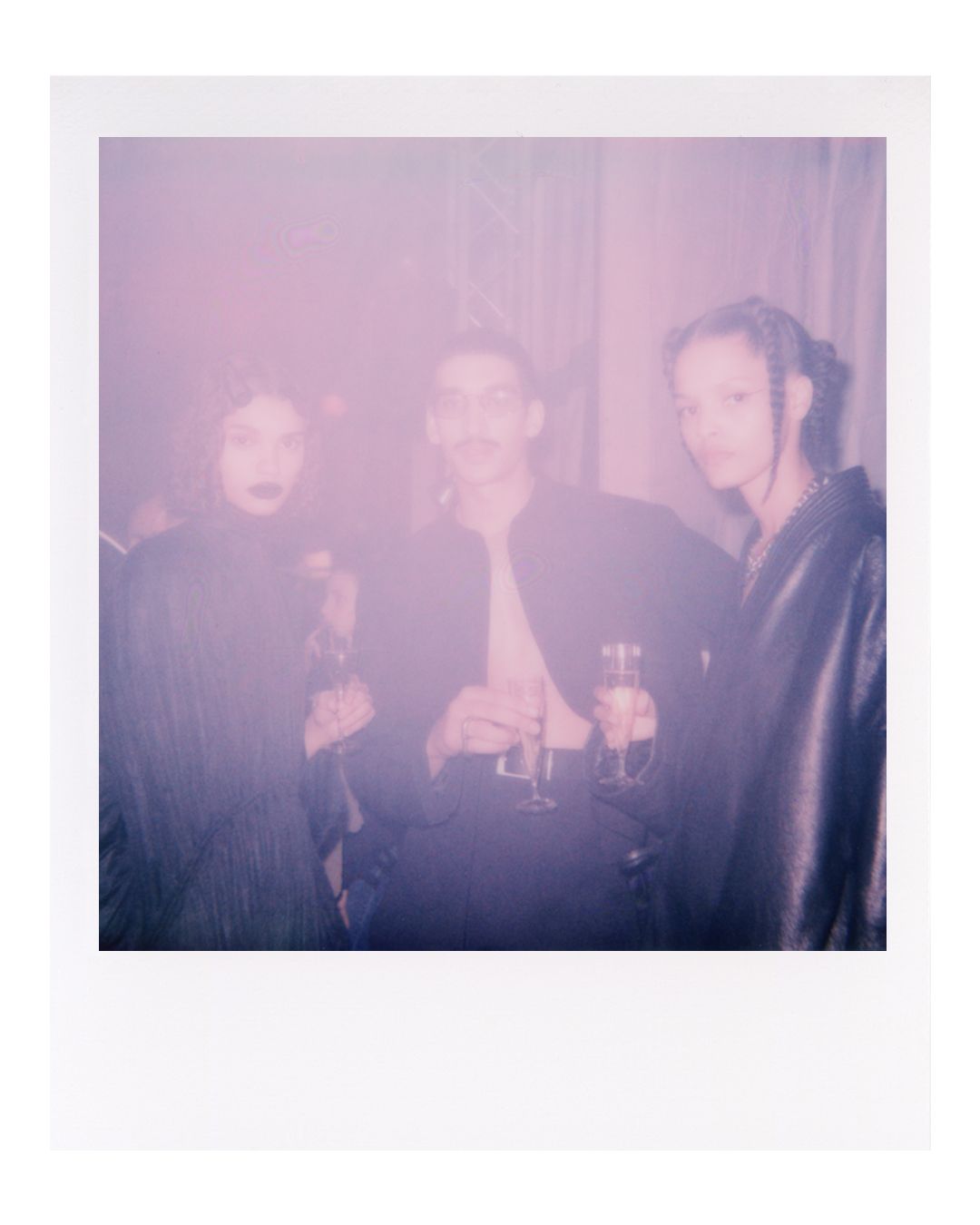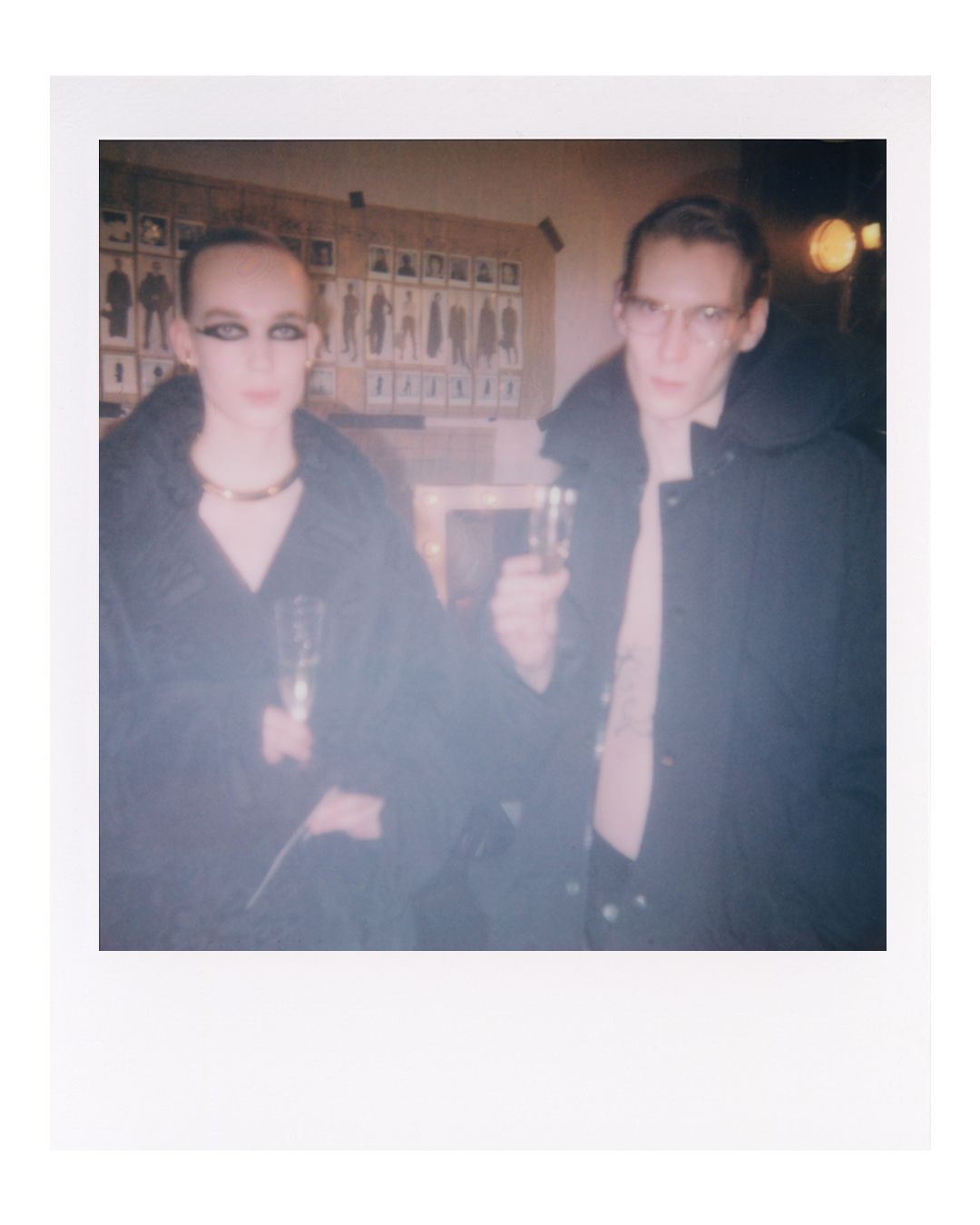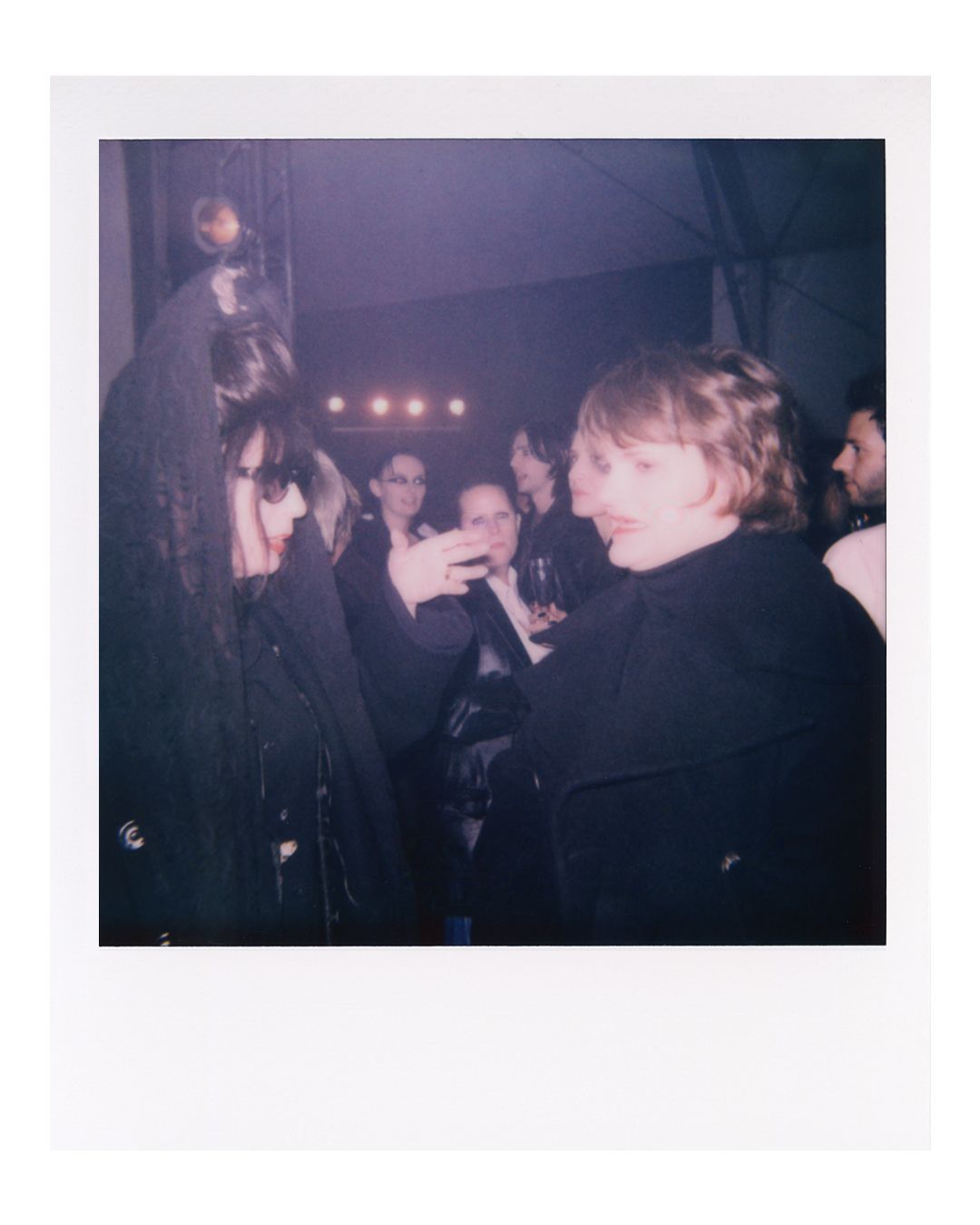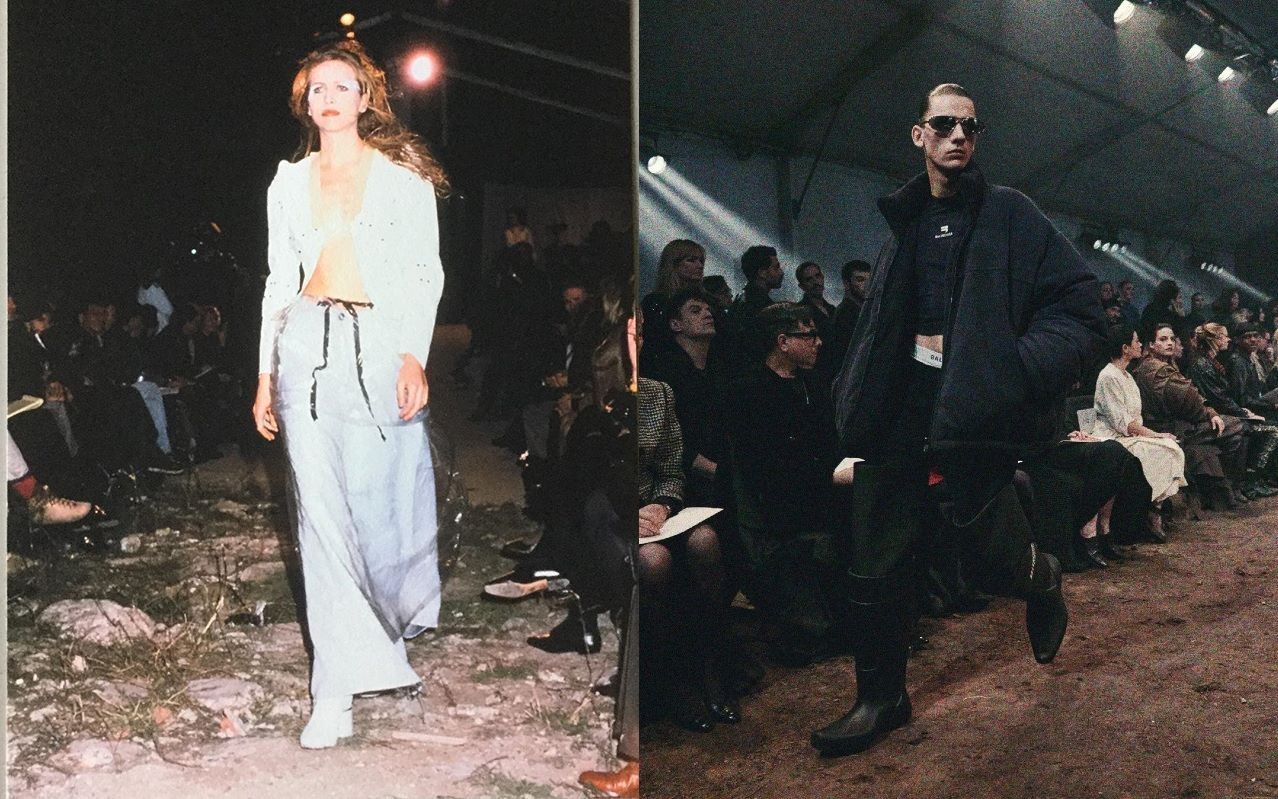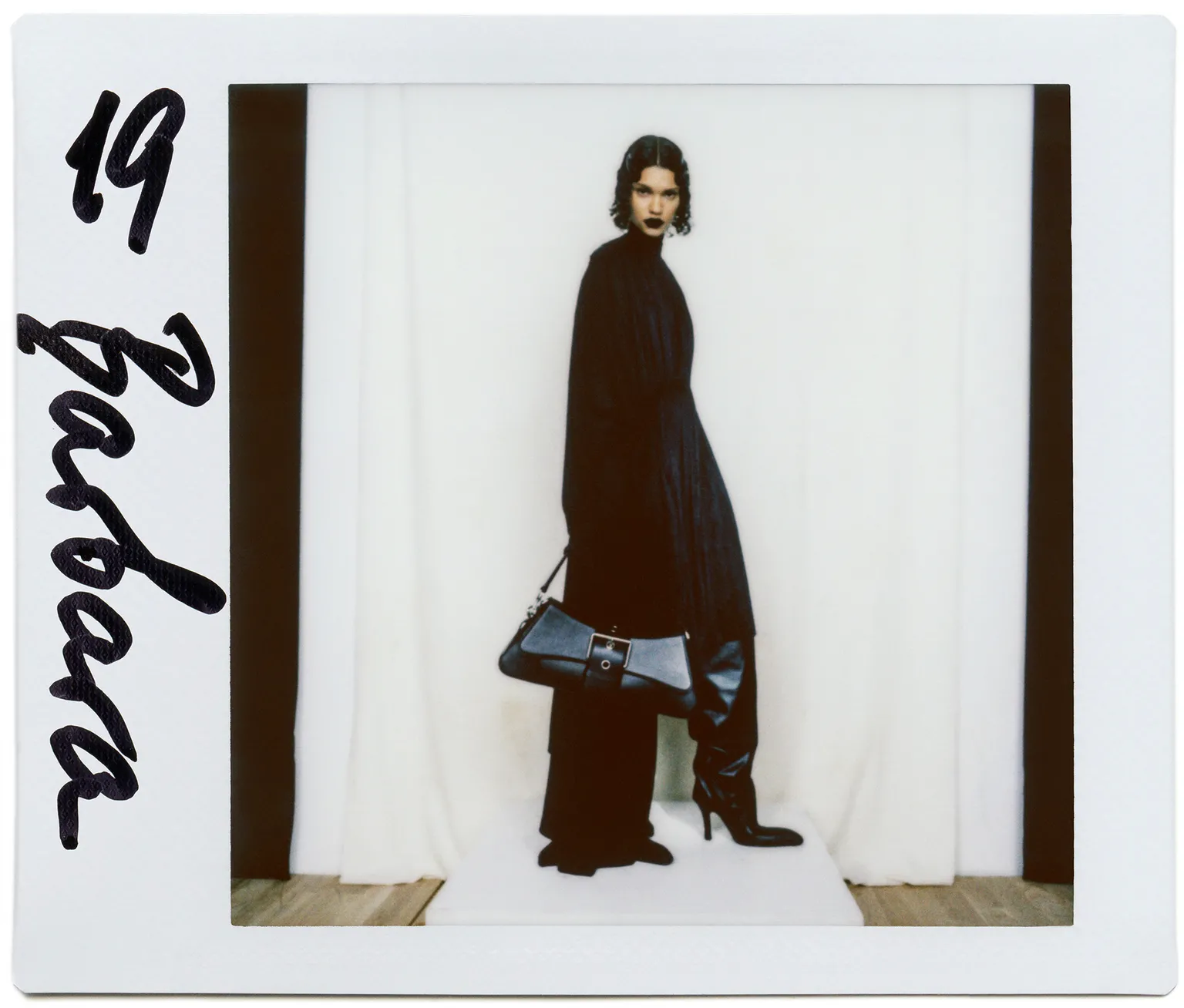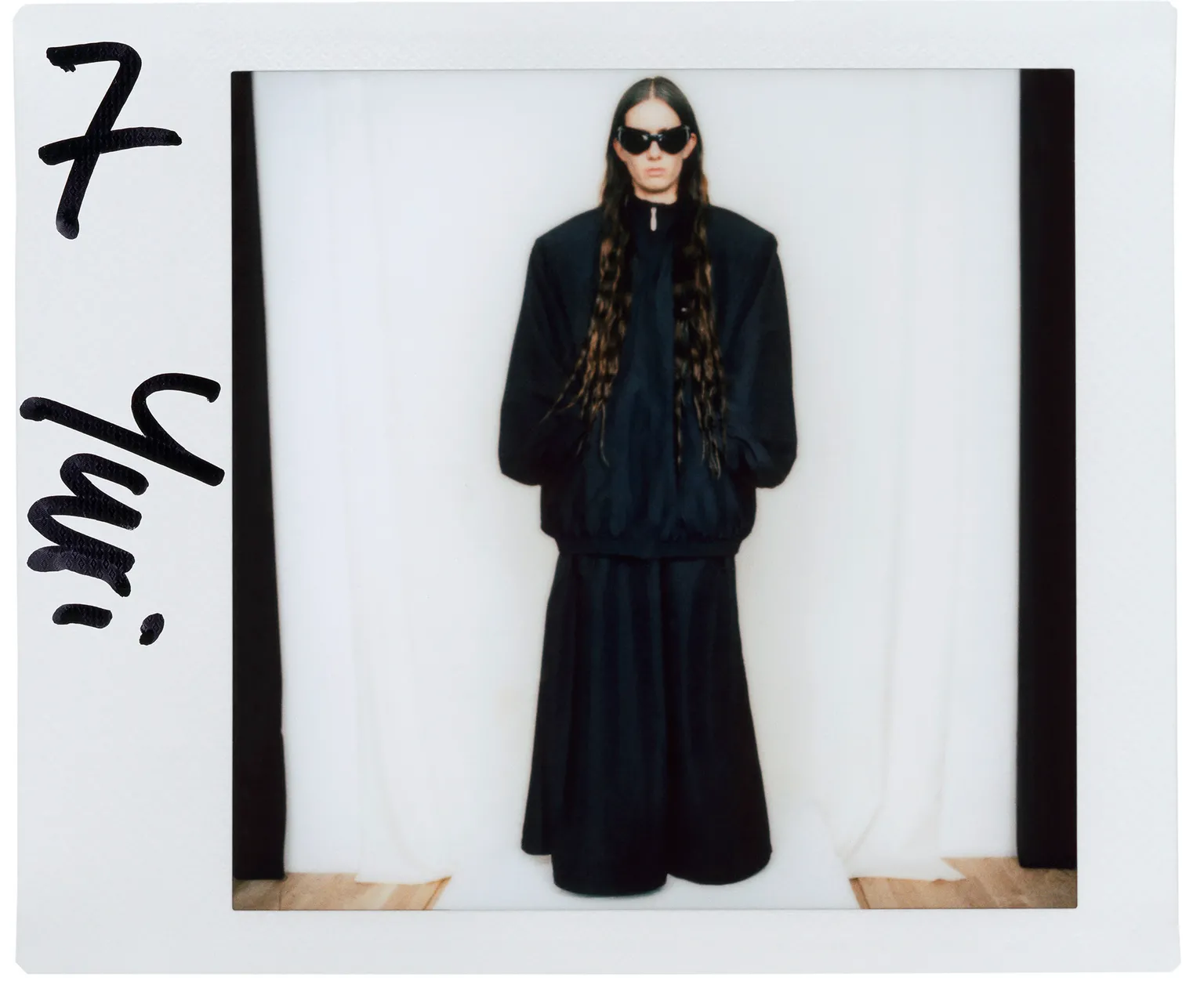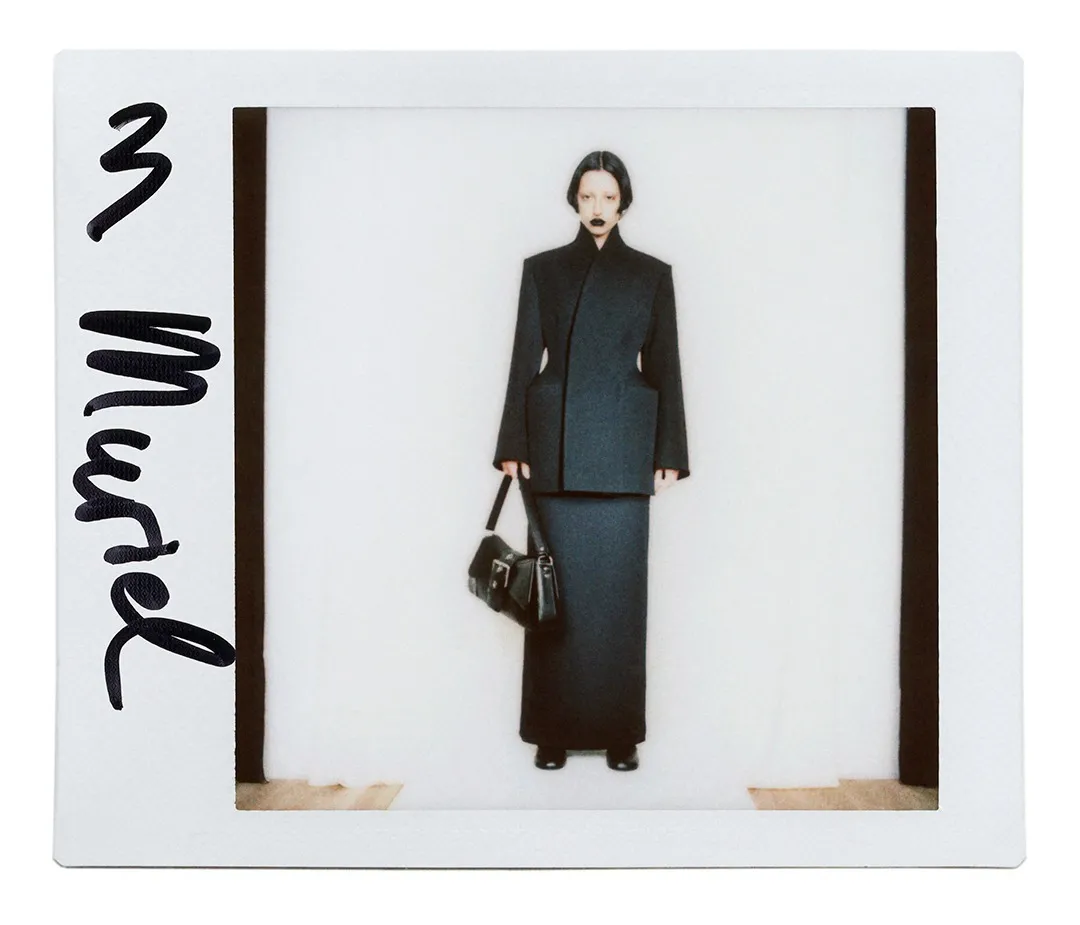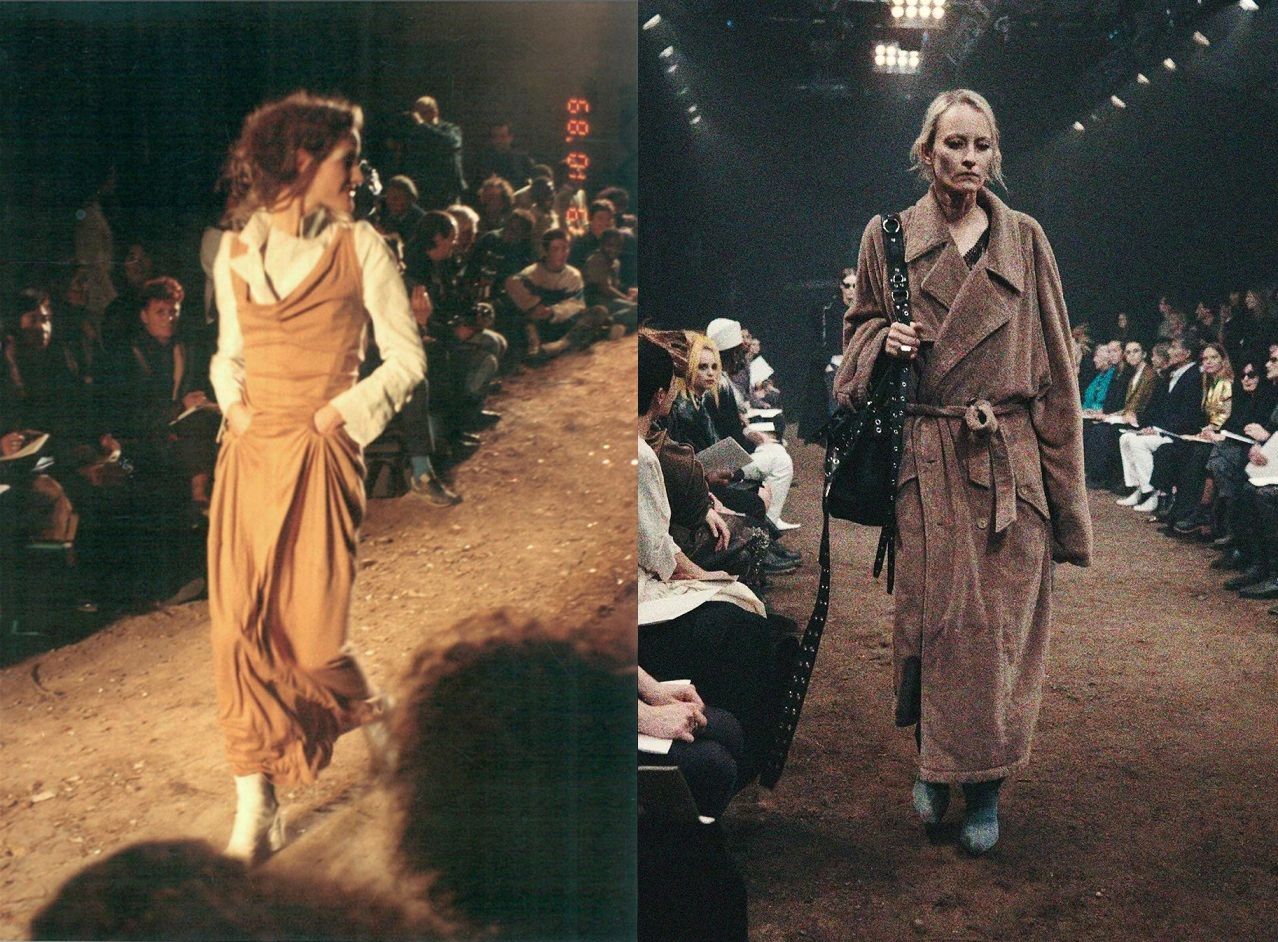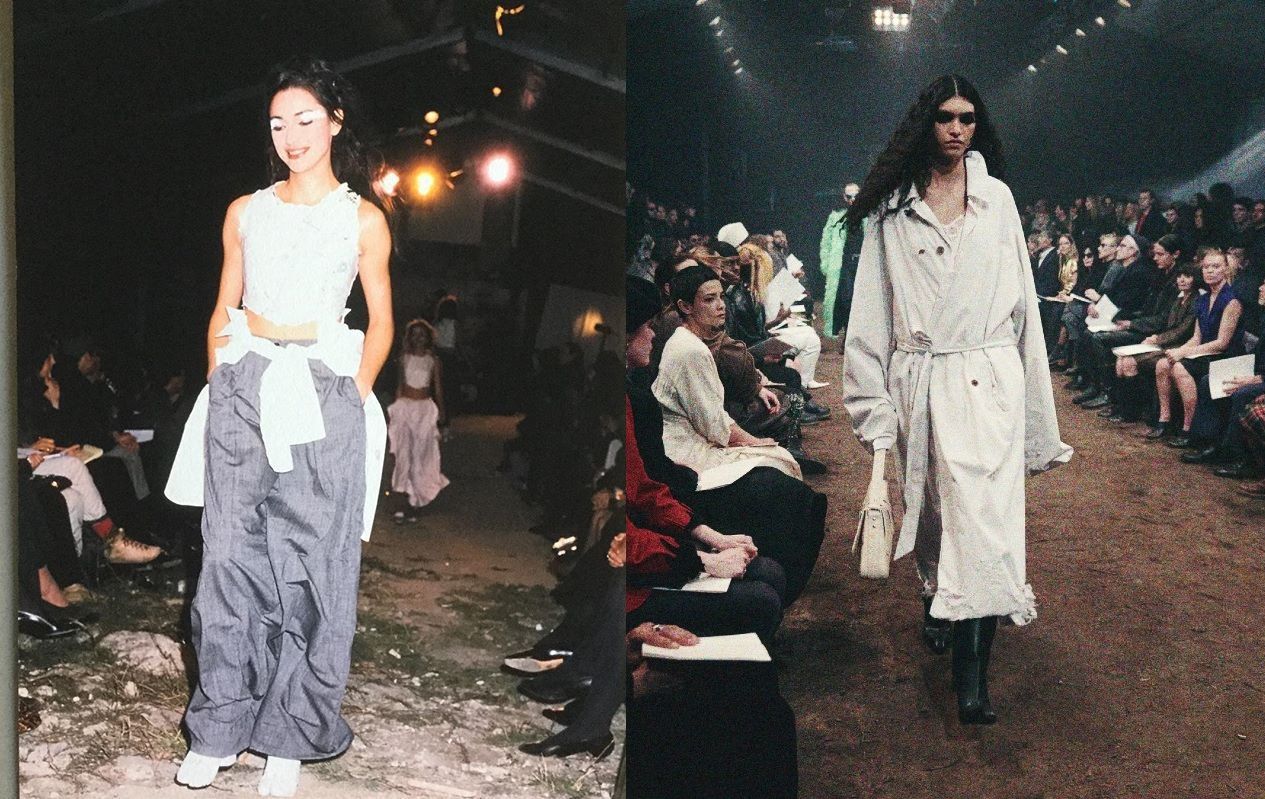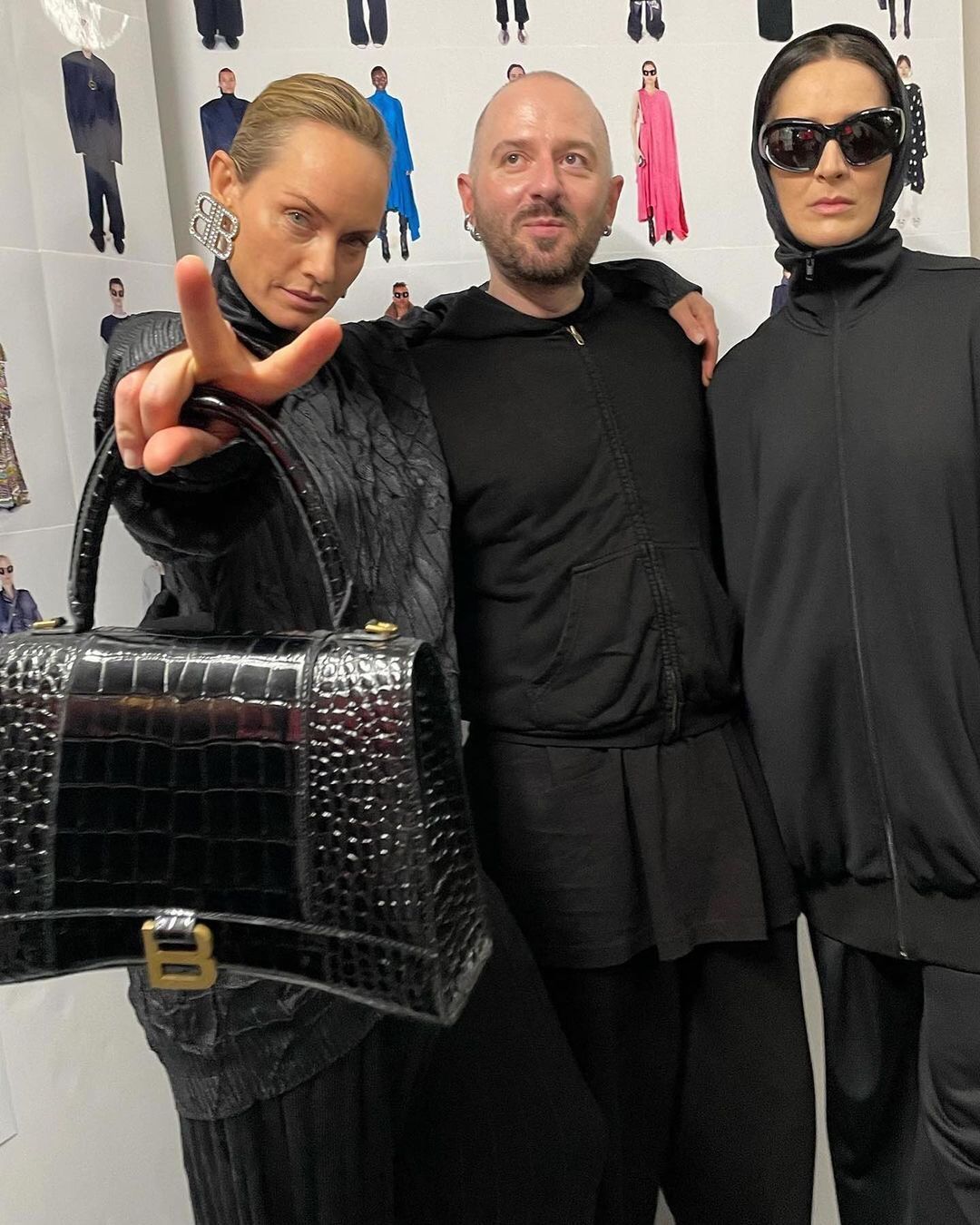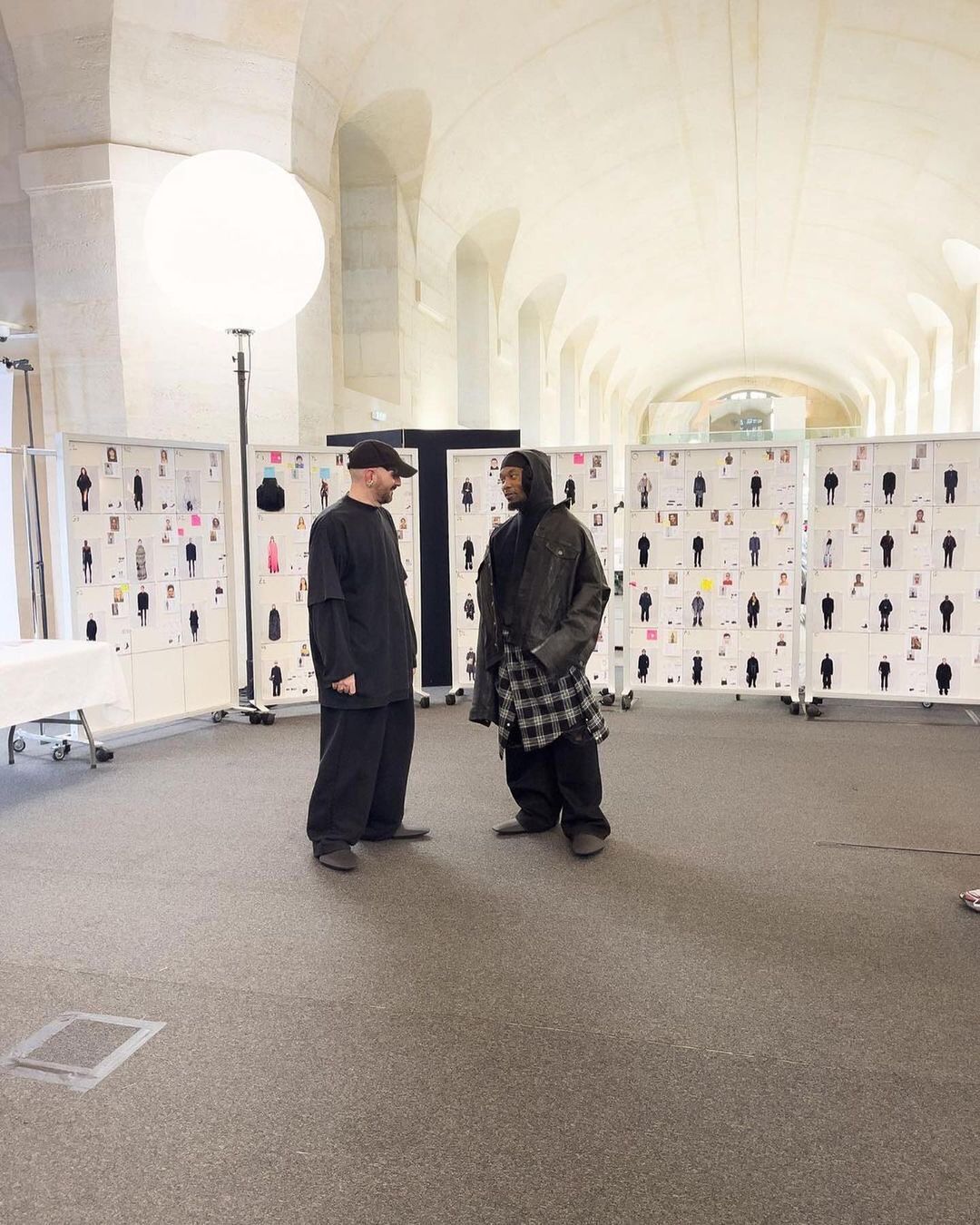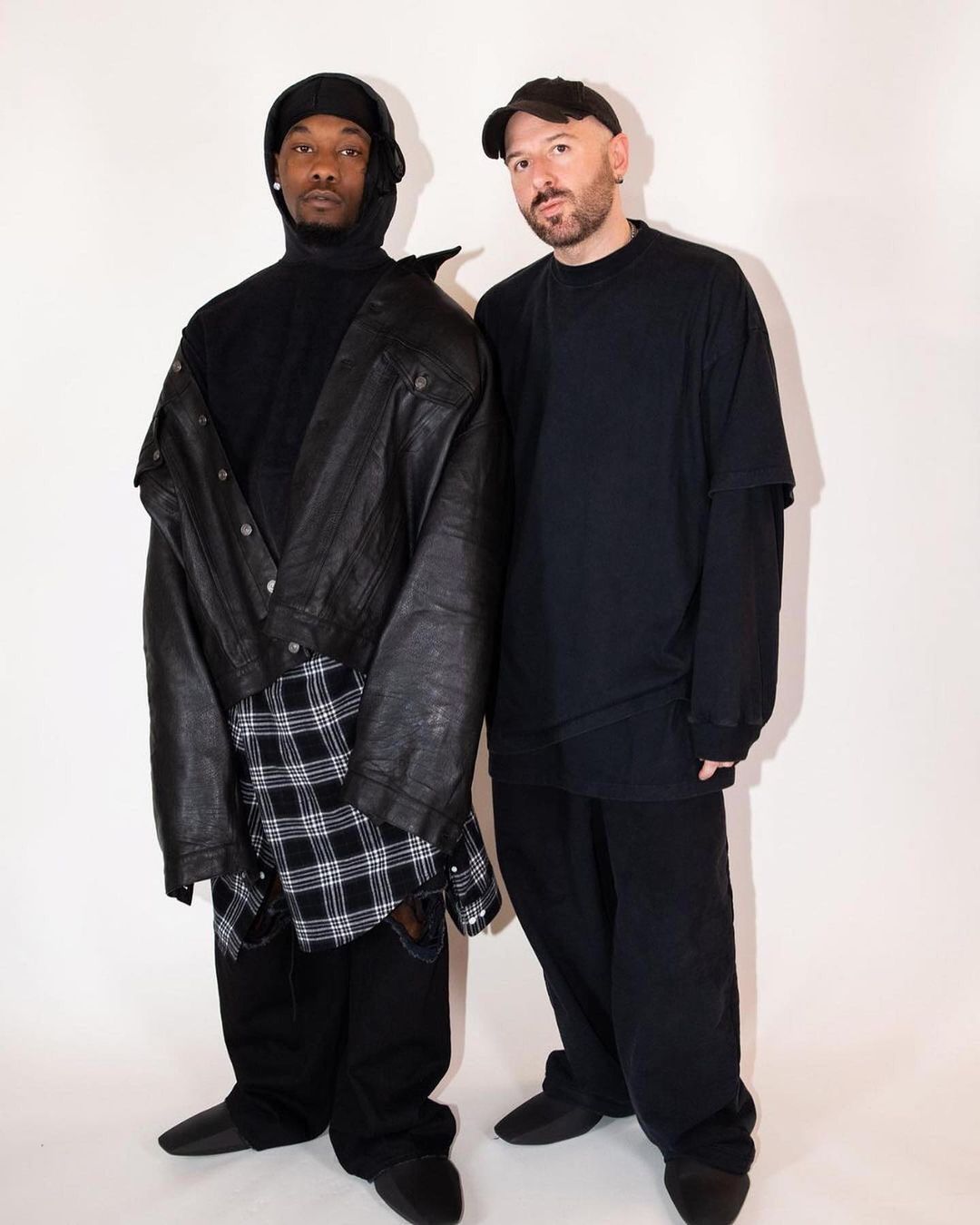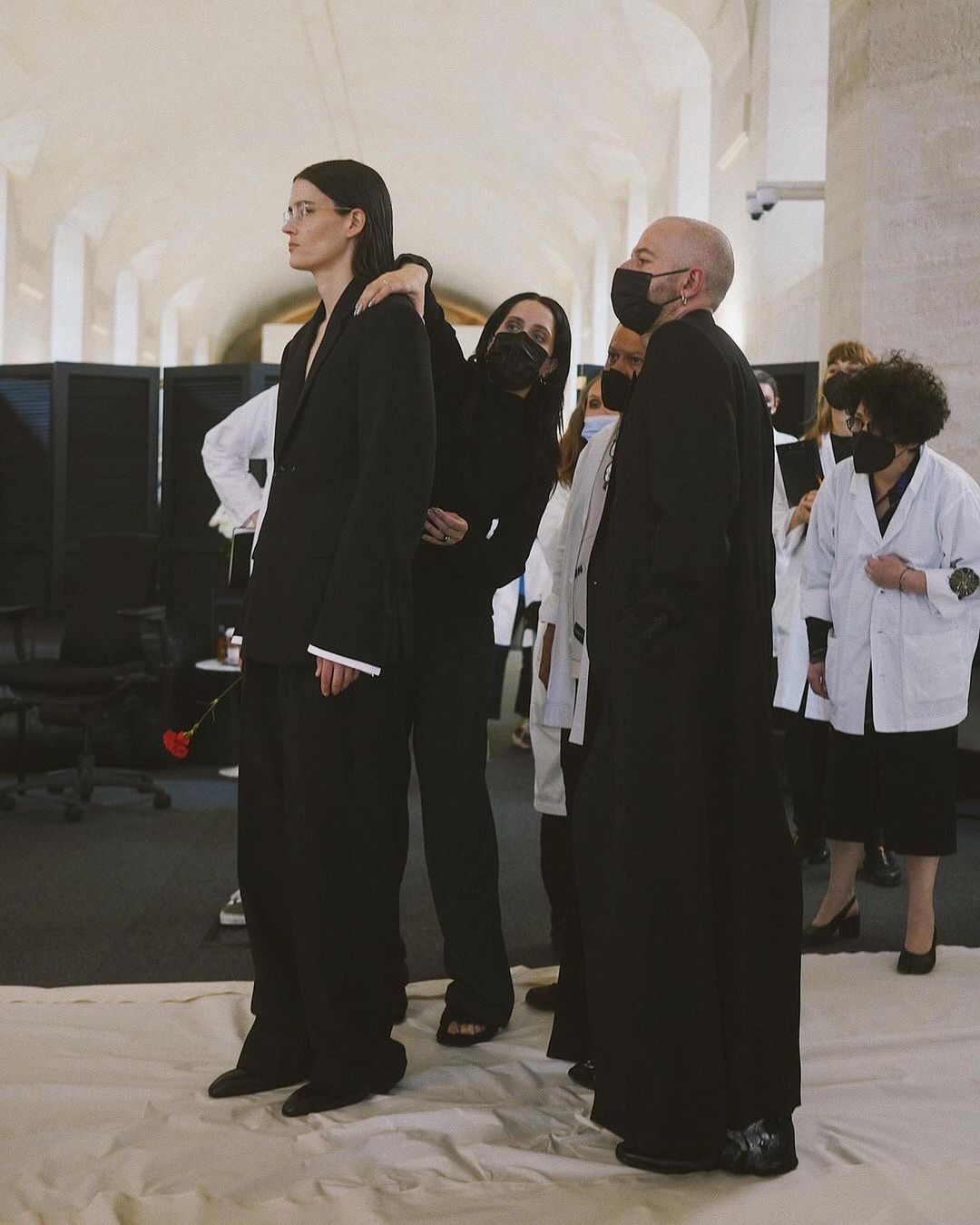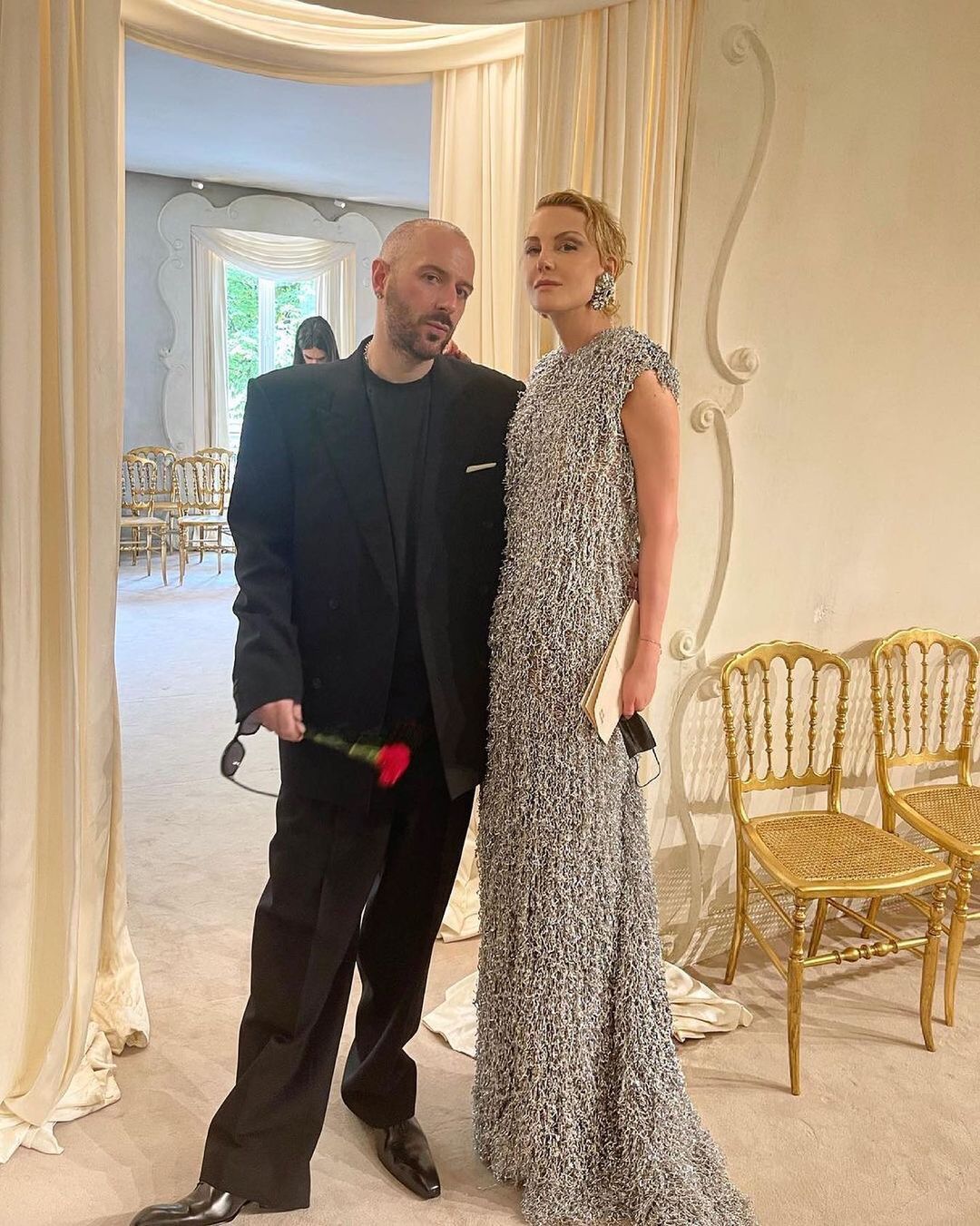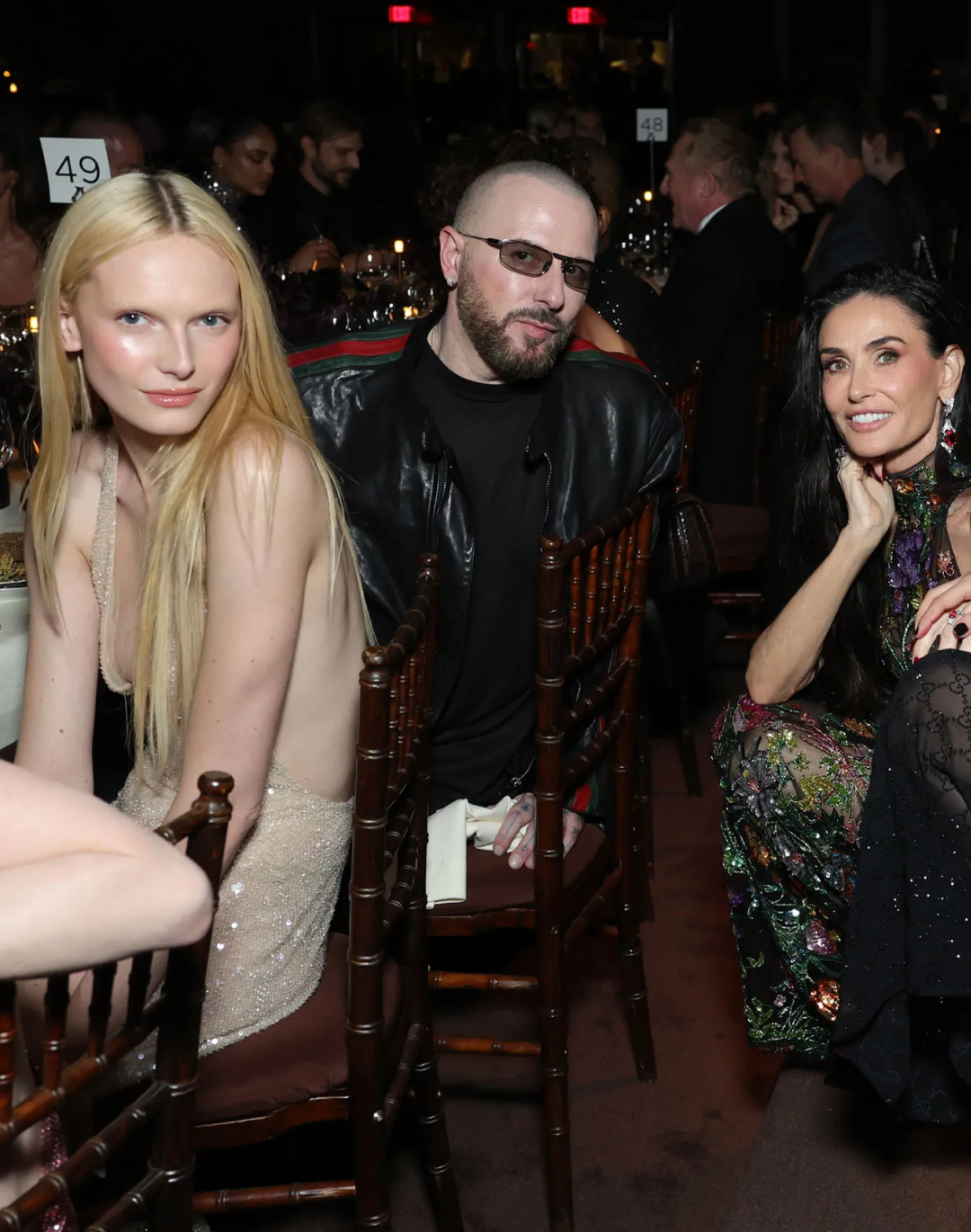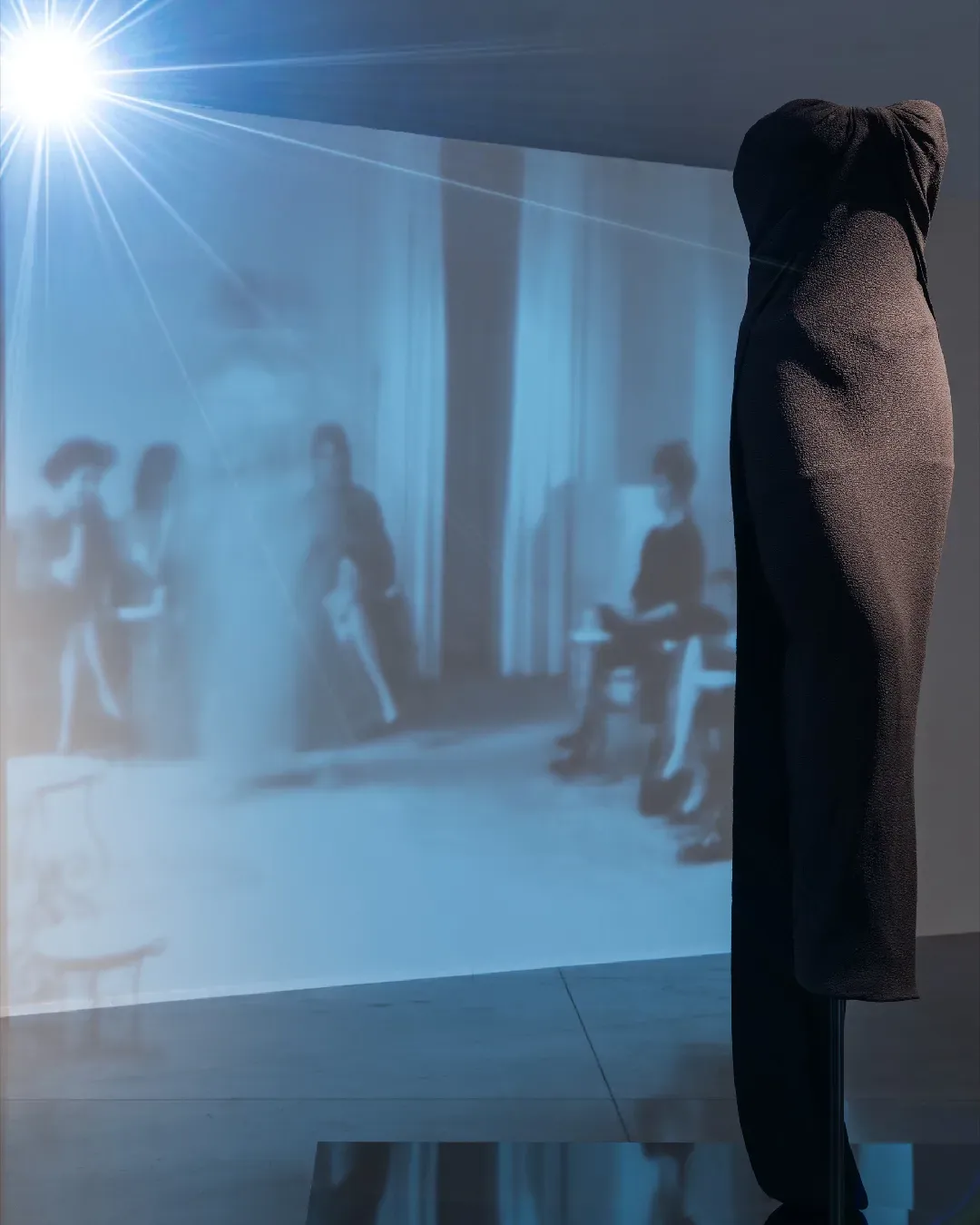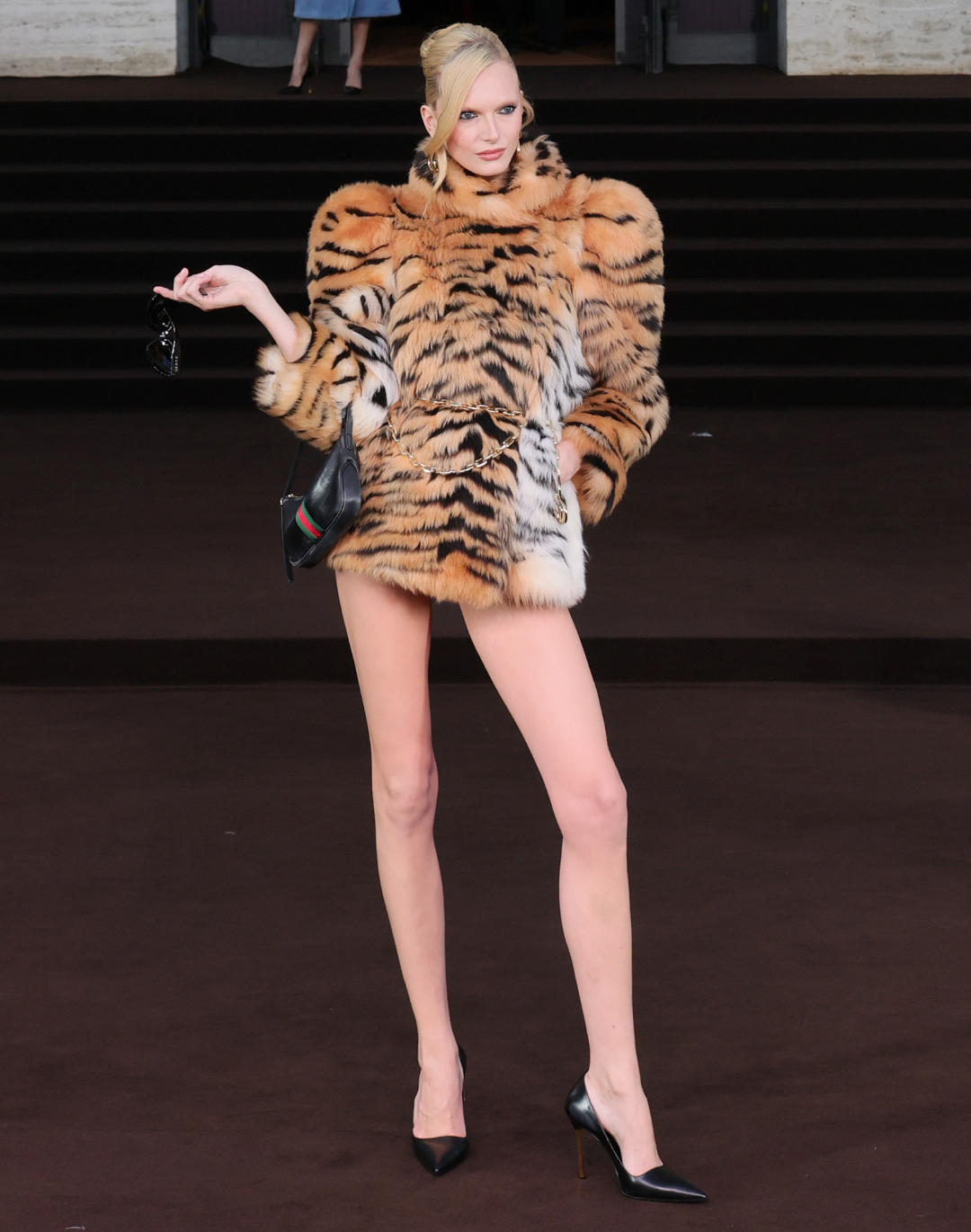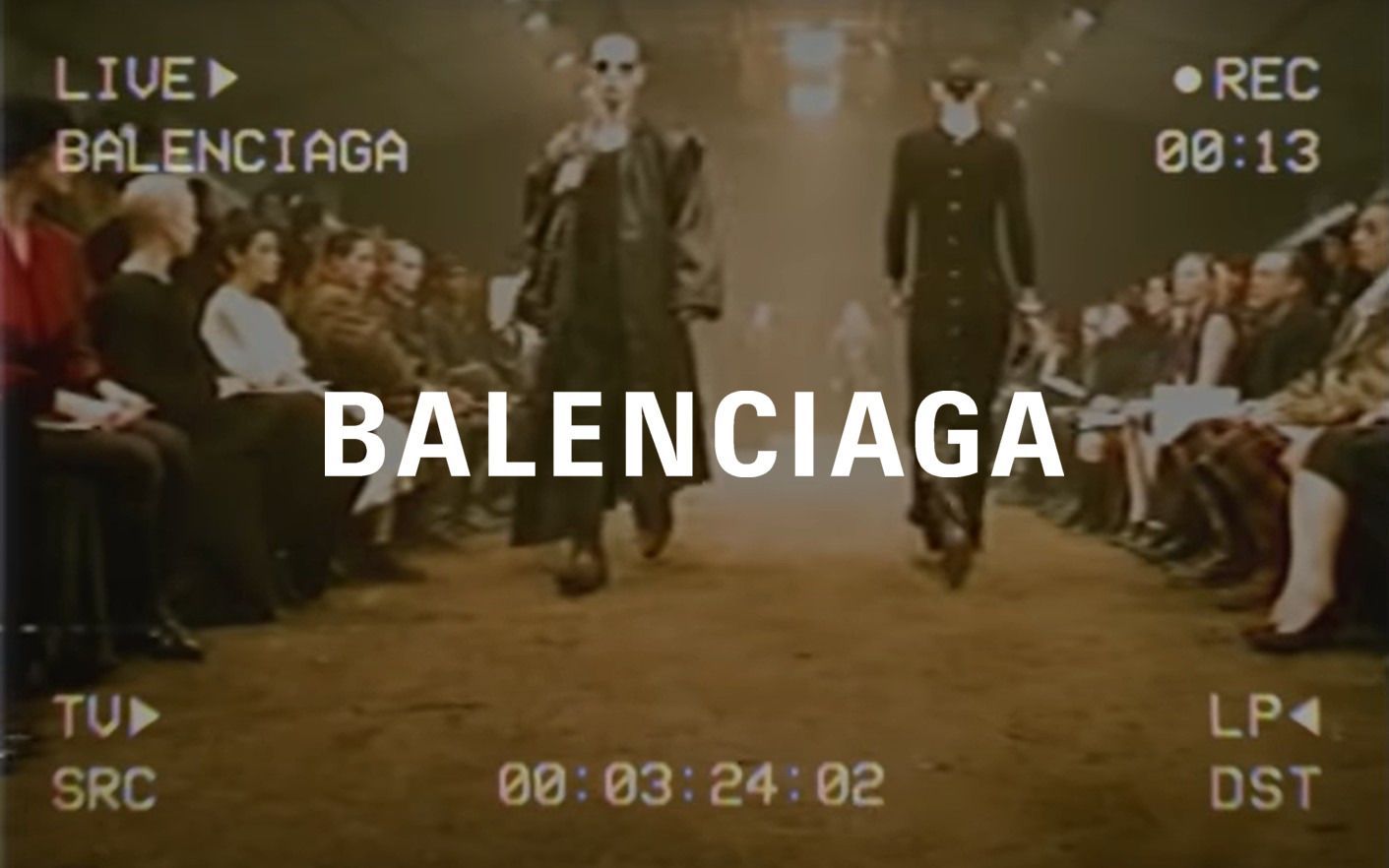
5 things to know about Balenciaga's FW22 show Back to the '90s with Demna
Balenciaga's FW22 show staged yesterday was, literally, a "message from the past" that wanted to reimagine what a modern Balenciaga parade would look like in the mid-90s. An interesting operation because, during that historical period, Balenciaga had already reopened its doors under the new direction that would then bring it to Kering through the acquisition by the Gucci Group in 2001 but had not assumed the kind of cultural relevance that has brought the brand so much in vogue in recent years. The show was presented with a deliberately analog aesthetic (VHS filters, polaroids, hand-held cameras) that recalls, more than the videos of the actual shows, the guerrilla-like footage of journalists who, at the time, ran along the red carpet and introduced themselves backstage – an approach that found a counterpart from that fascination for a raver aesthetic that, while going strong in the 90s, it had never really emerged on the catwalks of the time.
Revisionism and nostalgia, therefore, two opposite thrusts for a show that was a love letter to the adolescence of Demna (who was 14 years old in 1995) and that was as dense in details and reference as important for the future of the brand. Here are 5 things to know about Balenciaga's FW22 show.
1. From this show, Demna Gvasalia will be just Demna
The most important consequence of this show (as well as the arrival point of an artistic evolution that began in the last two years) is the assumption, by Demna Gvasalia, of a stage name: from this show onwards we will only talk about Demna. A strong statement, which wants to underline the iconicity of a creative legacy that has changed the way the public interacts with fashion, but also, as many have suggested, a lesson in star power learned from Kanye West, who from this year is legally known with the mononimo Ye, which takes the idea of celebrity designer to a new level.
2. Harmony Korine's new collaboration with Kering
To create the authentic 90s feel of the show was called one of the greatest photographers, screenwriters and filmmakers of the time: Harmony Korine. Author endowed with an inimitable expressive rawness, director whose story is deeply linked to Supreme and the dawn of New York streetwear through the absolute cult of the 90s Kids, Korine was a creative who has often lent his nostalgic and brutally realistic vision to fashion in recent years, collaborating especially with Gucci, for which he has signed several campaigns and videos including that of Gucci Tailoring with Tyler, The Creator and A$AP Rocky; the Guccci Cruise 2020 campaign and the Gucci by Harmony Korine book. On that occasion, nss magazine had interviewed him discussing his creative journey and his recent works. For the Balenciaga show FW22, Korine signed the video, the fake interviews on the red carpet with Isabelle Huppert and Naomi Campbell but also the polaroids that make up the lookbook of the show and the behind-the-scenes.
3. The triad of 90s trends: deconstruction, minimalism, anti-fashion
The importance of the show also lies in its meditation on the main trends of the 90s: deconstruction, minimalism and anti-fashion. Although today these approaches continue to exist and evolve, remaining in some cases still underground, it was precisely in the 90s that the deep rift was created between a highly formal and opulent "country club" luxury and a new type of luxury explored by designers such as Helmut Lang, Martin Margiela, Ann Demeulemeester, Rei Kawakubo and Yohji Yamamoto. These were the beginnings of Raf Simons at the helm of his brand, the times when Prada and Calvin Klein sent outfits of immaculate simplicity on the catwalk and when Gucci also covered its logos with Tom Ford's red velvet suits.
4. The reference to Martin Margiela
On Twitter, Maximilian Kilworth, social editor for @hftgroup, underlined how the setting of the show, a kind of showroom-shed illuminated by spotlights with a dirt floor was a reference to Martin Margiela's SS90 show. Just that show was a turning point for the fashion of that decade, the first to be held in public and in an urban setting, the first to disregard the front row and to go against the traditional idea of "beauty" with a catwalk cluttered with stones and a peripheral setting and also the first to have unconventional invitations, in this case drawn by the children of the suburban district where the parade was held. This show was also the show that inspired Raf Simons' desire to enter the world of fashion as well as the cornerstone of what would become the myth of Martin Margiela – perhaps the most imitated designer in contemporary history.
5. Balenciaga's forgotten designers: Michel Goma and Josephus Thimister
The brand's show notes read: «The collection symbolically fills a gap from Balenciaga’s forgotten years». A statement that on the one hand wants to project the importance that Balenciaga has today in the past in an almost retroactive way – towards a historical moment, the early 90s, in which the brand had been reopened for not even a decade waiting for the official rebirth that is made to begin with the tenure of Nicolas Ghesquiere in 1997. In fact, before Ghesquiere, the brand had two creative directors who today have been almost forgotten: Michel Goma and Josephus Thimister, who held their positions respectively from 1986 until 1992 and from 1992 until '97. These were "forgotten" years as the brand had just woken up from a sleep that began with the death of the founder – but yesterday's show is also an opportunity to return to look at the works of those designers, who both remain excellent, and who have given a lot to today's DNA of the brand, with the recovery of monastic silhouettes, the mega-stoles in fur and the hyper-essentialism of the forms.










































